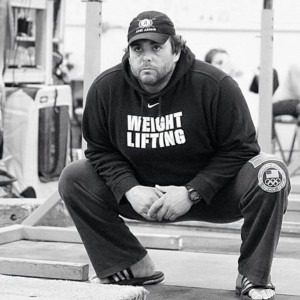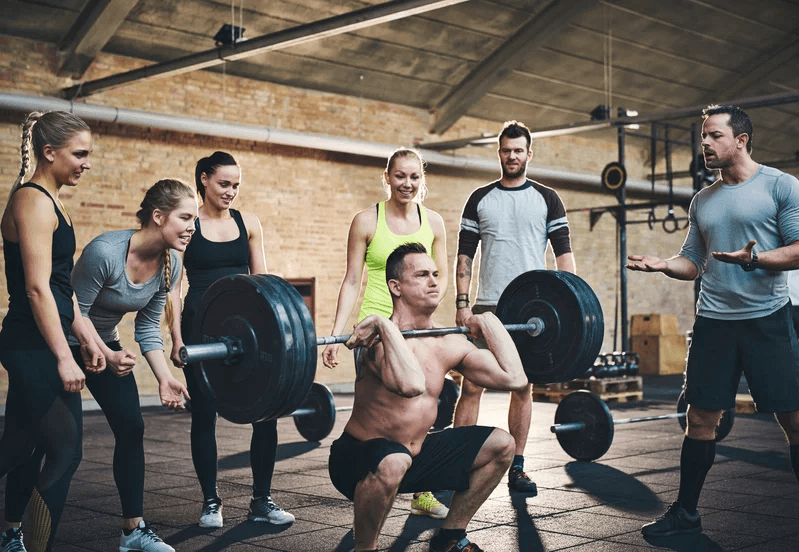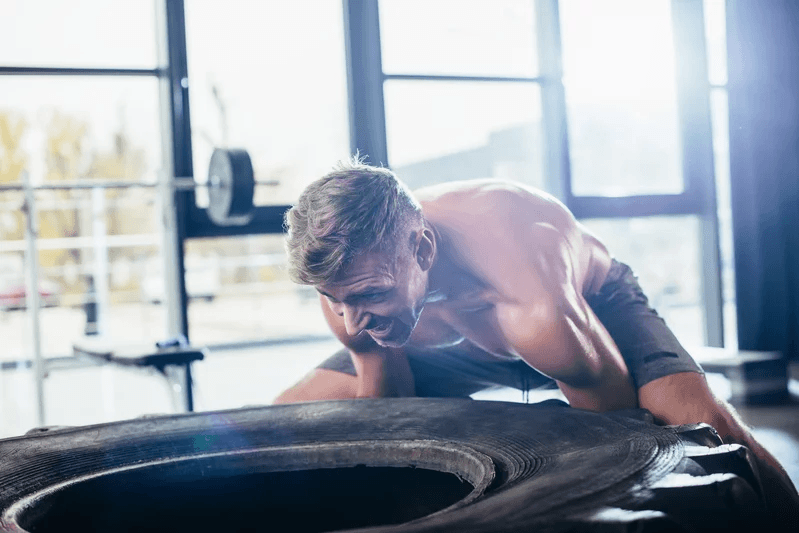Be Your Best (Part 2): Helping Athletes Overcome Barriers, Bust Through Plateaus, and Fulfill Their Potential
Coach Development | MindsetABOUT THE AUTHOR

Sean Waxman
Sean is the head coach and owner of Waxman’s Gym. He’s been a professional coach for nearly 25 years, a national-level competitive weightlifter, and a graduate-level student of kinesiology and biomechanics. Since opening Waxman’s Gym in 2010, Sean has developed two top-ten finishers at the World Championships, a World University Championship Silver medalist, a Pan Am Championship Silver medalist, and two Pan Am Championship team members. In addition, Sean has developed more than two dozen national-level weightlifters with three National Champions and seven national medalists. Moreover, Sean’s lifters have produced four American records, nine international medals, and nearly two-dozen national medals. Sean has also worked with CrossFitters of all levels including Regionals and Games athletes. When not developing competitive weightlifters and CrossFitters, Sean works with athletes of all skill levels from a wide range of sports to help them develop great skill, strength and power. Sean also has a great passion for helping other coaches learn to teach/coach weightlifting. Sean is currently a Director on the Board of USA Weightlifting, a USA Weightlifting Lead Instructor for Coaching Education, and the former President of the Southern California chapter of USA Weightlifting.
Earlier, we caught up with Sean Waxman, owner of Waxman’s Gym and USA Weightlifting coach, to talk about the habits and routines he has put into place over the years to ensure daily excellence. Now Sean’s back to share his secrets for helping his athletes overcome barriers, bust through plateaus, and fulfill their full potential.
// Where do you begin when empowering your athletes to be their best?
It actually doesn’t start with the athlete but with me and my fellow coaches. Are you the best coach you can be, and if not, what can you do to improve? You cannot expect athletes to be great by themselves – we need to strive for the same as coaches. If you don’t have expertise and aren’t at the top of your game, you’ll only be doing the people who depend on you a disservice.
// How important is goal setting?
It’s critical. While what you’re doing day to day with your athletes certainly matters, you must always keep the bigger picture in mind. Each athlete needs an ultimate goal they’re working toward, even if it’s a year or more away. If you can keep referring back to this, then you’ll be cognizant of how smaller decisions impact it. Are they servicing that big goal or undermining it?
One example is how hard you push your athletes. Sure, they’ll get a little banged up and sore, but you should never go so far that they can’t train purposefully the next day. Define a purpose for each athlete and constantly guide them toward this, course correcting when necessary.
// What do you do when an athlete has a problem that you can’t solve?
It’s essential that you have good resources and a broad network. You can be the best coach out there, but there will be times when, as you said, an athlete has an issue that’s beyond your own experience or knowledge. That’s when you need to be humble and unafraid of saying, “I don’t know the answer, but I’ll ask someone who does.”
You can’t just cold call someone. Instead, you need to develop strong working relationships with doctors, nutritionists, PTs, and so on, and be willing to help them out. Then when you do reach out, give them as much context about the athlete and their aims as you can. If the subject matter expert gets what you’re trying to achieve with this individual, then they’ll be better able to apply their knowledge effectively.
// What role does culture play?
It’s going to be different in every gym, but you must figure out what your values are and how your words and actions will reinforce these daily. Establishing the right culture for you, your fellow coaches, and your athletes is crucial because culture will dictate the environment, which in turn goes a long way to shaping outcomes.
We want there to be a supportive atmosphere that’s conducive to high performance – not just for our established athletes, but also for someone who just comes in to visit once. This requires us making people feel safe and comfortable.
And you have to realize that culture is a living thing, not a static one. You have to constantly cultivate and safeguard it. Last year our culture got infected by something that I can’t fully go into now, but it caught me off guard because I wasn’t paying close attention. Luckily I was able to get a hold of the situation and make the necessary change.

// How important are individuals to shaping that collective culture?
Very. It starts with me as a leader and my other coaches, and how we carry ourselves and approach our craft with commitment. A coach has to exude confidence and calm. If you’re at a meet and someone misses a couple of lifts, you can’t panic or freak out because they’ll feed off of that. You must keep it together no matter what the circumstances are…because if you can stay on an even keel, it will reassure your lifters.
And sometimes you have to fight for them because if they fought for themselves, it would divert too much of their energy and focus away from what they need to ruthlessly focus on. But sustaining that culture is also partly down to them.
The gym needs a diverse mix of people. Not everyone can be a collegiate or world champion, or even podium. We do have those kind of athletes in our team setup, but we also need those who provide encouragement and support. In the best cultures, everyone can and is expected to contribute something. And it’s up to me as the coach to set these expectations and do everything I can to find out what each athlete can bring to the table.
// How does your approach differ for your lifters who are focused on elite competition and the rest of your members?

It comes down to a willingness to be flexible and being empathetic. We do have a few athletes who are solely focusing on training, recovery, and competing. So I can be a bit more demanding with them. Yet we have many more people for whom this kind of focus isn’t a reality. They have jobs, kids, and all kinds of other responsibilities. For them, I have to factor in those external stressors and try to balance these with my programming so they don’t get overwhelmed.
It’s my duty to help them get better not just in their lifting but also as human beings, so I have to take the whole person into account. As long as they’re showing up, putting in their best effort, and doing what they can on the recovery side, then we’re good.
// What role does accountability play in your getting the best from your athletes?
While you can’t be too much of a hard ass, people need to know what’s expected of them and then follow through consistently. If an athlete is non-compliant with your standards, you should explain to them what they’re doing wrong or not doing, and then give them ample opportunity to fix it. But if they refuse to or soon lapse back into the same bad habits, there have to be consequences.
I sometimes put up with a little bit more from a great athlete, but at a certain point I have to draw a line and, if they’re unwilling to change, it’s best for us to part ways. Otherwise it sets a bad example for everyone else and starts to undermine your culture.
As a coach, I’m going to be in this gym for the rest of my career, but ultimately athletes will come and go. You do all you can on your side, and then it’s up to them. Setting and reinforcing boundaries can feel uncomfortable but it’s a necessity. When someone becomes a consistent problem and it’s affecting other people, they have to go. If you have poor character, you’re not going to be on my team for very long.
// How do you view the relationship between practice and performance?
I’m a big believer in setting people up for success early on. This starts with technique and understanding the lifts before you layer a lot of programming on top. An athlete can start to lose confidence if they miss a few lifts in competition and if that happens, it’s up to me to help restore their self-belief. But it’s better to get ahead of that and make sure they’re consistently making their weights in training.
Some people focus so much on getting athletes to PR or hit those 90% and 95% lifts. That has a place, but it’s not everything. I want to get them to the point where the percentages or totals aren’t as important as quality with every rep. Regardless of what someone is snatching or jerking, if they’re making every single rep with quality technique, that’s going to groove a habit of success that will directly transfer to competition.
// How do you help an athlete deal with issues they’re having away from the gym?
I recently had a young athlete who had a ton of tough life stuff going on. She came to me and asked for some time off from the team. After learning more about her situation, I told her that she certainly could take a break from team training and competition, and encouraged her to just come in and do something purposeful as often as she’d like, and then to come talk to me when she was ready for some programming.
She’d come in a do some light barbell work, use the leg press machine, or push a sled up and down a couple of times a week. After a while she came over and said she wanted to start training three days a week. So I wrote her a very basic program that didn’t include percentages, sets, or reps and urged her to just go as far as she felt comfortable. Again, I told her to let me know as and when she wanted more.

A couple of months later she came back and said she wanted to compete again. So we looked at the calendar and found a meet. I advised her to not worry about the weight in each lift or her total, but just to enjoy being back on the platform and with the team. Then we set two goals for next year – to compete the University Championships and then make the World University Championships squad. This way she had something to shoot for in the future without immediate pressure.
The key here was patience on my part and not overloading this talented young woman with expectations. She had so much going on in other areas of her life that it would’ve crushed her if I was too demanding. I gave her the time she needed to feel less stressed and revive her love of lifting. And I let her be the one to decide when she wanted to make a change.
Are you a better coach after reading this?
More coaches and athletes than ever are reading the TrainHeroic blog, and it’s our mission to support them with usefull training & coaching content. If you found this article useful, please take a moment to share it on social media, engage with the author, and link to this article on your own blog or any forums you post on.
Be Your Best,
TrainHeroic Content Team
HEROIC SOCIAL
HEROIC SOCIAL
TRAINING LAB
Access the latest articles, reviews, and case studies from the top strength and conditioning minds in the TH Training Lab

